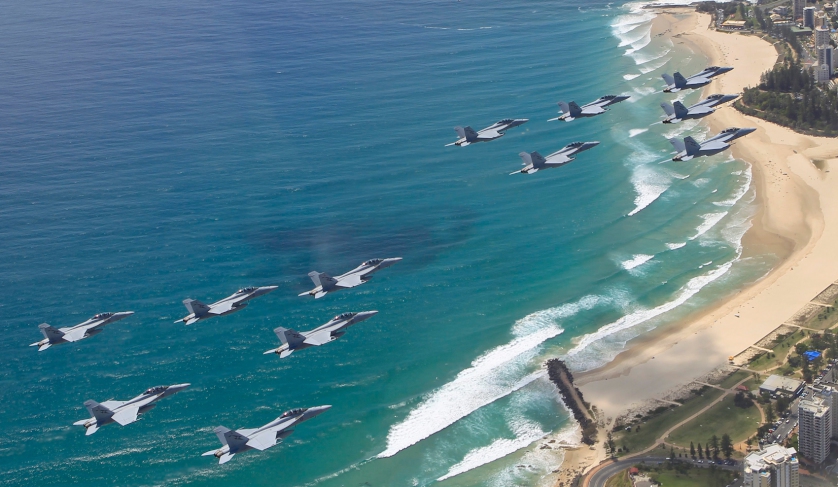When the Defence Aviation Safety Regulations (DASR) were released on 30 September 2016, some terminology changed and roles were clarified, particularly in regard to accountabilities for flight safety – a capability enabler and an integral accountability of command.
To continue reading the rest of this article, please log in.
Create free account to get unlimited news articles and more!
DASR simplifies the aviation safety framework by centralising accountability at the lowest level – the Military Air Operator (MAO). The introduction of the MAO clarifies this accountability and gives MAO accountable manager's – which will typically be Force Element Group Commanders or Army and Navy equivalent – the control and freedom to establish fit-for-purpose, mission-capable, efficient and safe aviation operations.
The central role of the MAO offers considerable leverage to ensure maintenance, design, and training organisations meet the MAO’s requirements.
Introduction of the MAO addressed gaps in regulatory oversight by regulating at the One-Star aviation commander level, aligning regulatory oversight with the organisation more directly accountable for the aviation safety and continuing airworthiness of each aircraft type. While regulatory accountabilities are targeted at the MAO, DASR does not subordinate or undermine command accountabilities.
It emphasises the centrality of command in making capability decisions; ensuring safety; and imposing common systems for the purposes of command, governance and interoperability. Although, the Defence Aviation Authority – a role held by the Chief of Air Force – is responsible for assuring aviation safety through the establishment of a framework for the management of aviation safety risks within Defence.
Commanders are accountable for ensuring that aviation safety hazards and risks are eliminated or otherwise minimised so far as is reasonably practicable (SFARP). Historically, these obligations and accountabilities have been confused due to the appointment of an Operational Airworthiness Authority (OAA) in the command chain. DASR addresses these longstanding issues and reinforces the centrality of command in discharging aviation safety responsibilities.
Air Commodore Geoff Harland is an Air Combat Officer whose background includes flying and commanding F-111’s at No 1 Squadron and Officer Commanding No. 82 Wing where he oversaw the Super Hornet achieve ‘final operational capability.’ He has worked for the Civil Aviation Safety Authority as a senior manager, commanded Air Force Training Group and has been director of the Airworthiness Coordination and Policy Agency.
AIRCDRE Harland said, “Military Air Operator regulations clearly state the accountabilities that a commander of aviation assets holds in relation to managing safe and effective flight operations. It makes it significantly more clear what I need to do as a commander in delivering air power capability and as a Military Air Operator to ensure flight safety.”
In terms of safe flying operations, the new regulations’ “intent is exactly the same” as the previous regulations, he explained.
The new regulations, specifically the MAO concept, clarify accountabilities and acknowledge the primacy of command in balance with the Military Air Operator’s requirement to ensure safe operations.
“Since Defence introduced its original regulations, which were arguably leading edge at the time, global standards have developed and overtaken existing ADF safety programs and regulation,” explained AIRCDRE Harland.
“As a MAO, we will continue with safe and effective flight operations, it is just expressed in terms of globally understood structures and terminology.”
The accountable manager of the MAO is the FEG Commander, who is responsible for delivering capability in accordance with Air Commander Australia’s direction as well as ensuring safe flight operations, ably supported by an “aviation safety program that has all the elements you would expect with clear accountabilities”, he said.
AIRCDRE Harland believes the introduction of MAO “also offers opportunities for greater alignment with civil and military aviation authorities in future should the opportunity arise”, as well as a “simpler and more effective” structure. The concept of the MAO is part of an integrated approach to military aviation safety, which aligns with global best practice and reinforces Defence commitment to being at the cutting edge.
Barrie Bardoe is a widely published journalist and author of the forthcoming book The Cost of Doing Business: Military Airworthiness in Australia. He is currently public affairs officer with the Defence Aviation Safety Authority.
He is conducting PhD research into the effects of a subtle and emerging cultural influence on diverse areas of communication and social organisation. His writing reflects a personal standpoint.

 Login
Login







